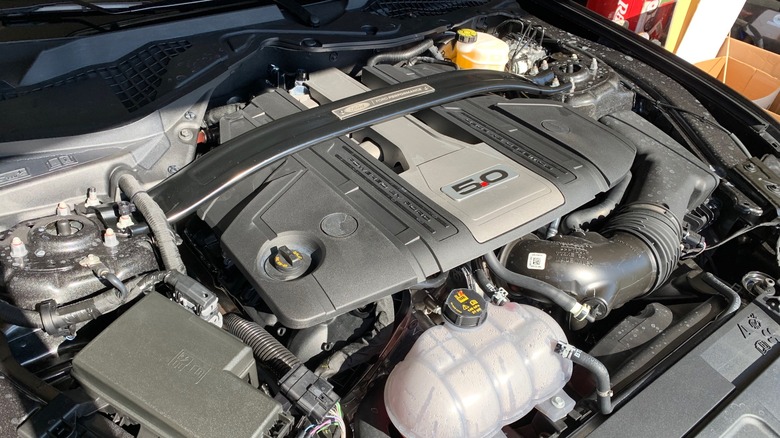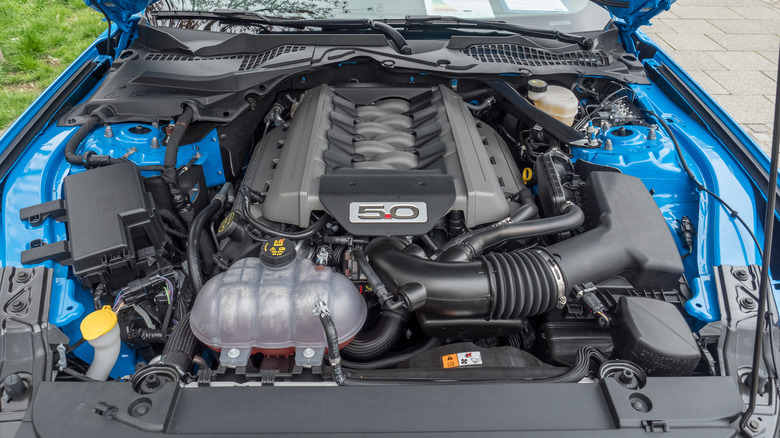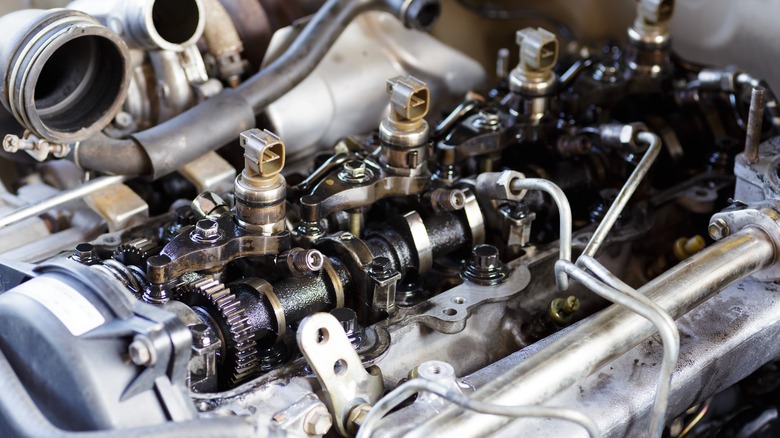Gen 2 Vs Gen 3 Coyote V8 Engines: What's The Difference?
Ford first introduced the Coyote engine back in 2010, and in the years since, this 5.0 L modular V8 has been a constant, important part of the company's line of engines. In 2023, Ford had already entered the age of the fourth generation of the Coyote for its 2024 model year vehicles. For a motor company to continue to tinker and improve a popular engine that many times over the course of not even 15 years, it indicates that it takes quite a bit of stock in making sure this V8 continues to be one of the best V8 engines of all time.
To illustrate how the Coyote has evolved, let's focus in on two generations of its lifespan: the second and third. In many respects, the two generations of the engine are quite similar. The basic design has remained the same, and details like the length of their stroke (92.7 mm), the connecting rod weight and length (618 g and 150.7 mm, respectively), and the valve material are all identical. However, there are other changes throughout the engine that later the size and material that show the Generation 3 Coyote to be a more productive V8 than the Generation 2 variant.
[Featured image by Jpogi via Wikimedia Commons | Cropped and scaled | CC BY-SA 4.0]
More power
Ultimately, the big difference between the Gen 2 and Gen 3 Coyote engines is the amount of power they can generate. The Gen 2 version was no slouch in that department, with it being able to reach up to 435 hp with a peak torque of 400 lb-ft. When the Gen 3 Coyote came around, Ford was able to amplify those numbers to 460 hp and 420 lb-ft of torque. They achieved this increase in power a couple of different ways.
While the 92.7 mm stroke length remained the same from Gen 2, the newer generation slightly bored out the engine a little further, increasing the diameter from 92.2 mm to 93 mm. Not only that, but Ford was able to increase the compression ratio of the cylinders to the combustion chamber from 11:1 to 12:1. The Gen 3 Coyote was also given a raised dome for the pistons, upping the volume from 4.451 cc to 8.411 cc. With all this, the newer engine managed to be six pounds lighter than the previous generation but maximized power.
[Featured image by Ermell via Wikimedia Commons | Cropped and scaled | CC BY-SA 4.0]
Port vs. direct fuel injection
Another important distinction between the two generations is that the Gen 2 Coyote only uses port fuel injection, meaning that gasoline is injected into the intake port before the intake valve lets it into the combustion chamber. Gen 3, on the other hand, uses both port and direct fuel injection, where fuel goes directly into the combustion chamber. Direct injection has two major benefits compared to port injection. The first aids in the power of the engine. When fuel is injected directly into the combustion chamber, it can immediately be used for energy. This feeds right into the other major benefit, which is that it is a more fuel efficient.
Port injection tends to spray more fuel because it has a further and broader path to travel, which direct injection doesn't have to worry about. Gen 3 still uses port injection in addition to direct because being able to have a balance between the two depending on what kind of loads and RPMs you may be dealing with, as port injection works better with lighter loads and direct injection with heavier ones. The Gen 3 Ford Coyote engine can utilize the best of both worlds to make it a more powerful, more efficient engine.
Now, the Gen 4 Coyote is in the world and is even more powerful and efficient than the Gen 3 version, with a Dark Horse version that can get up to 500 hp. Evolution is hard to stop.


